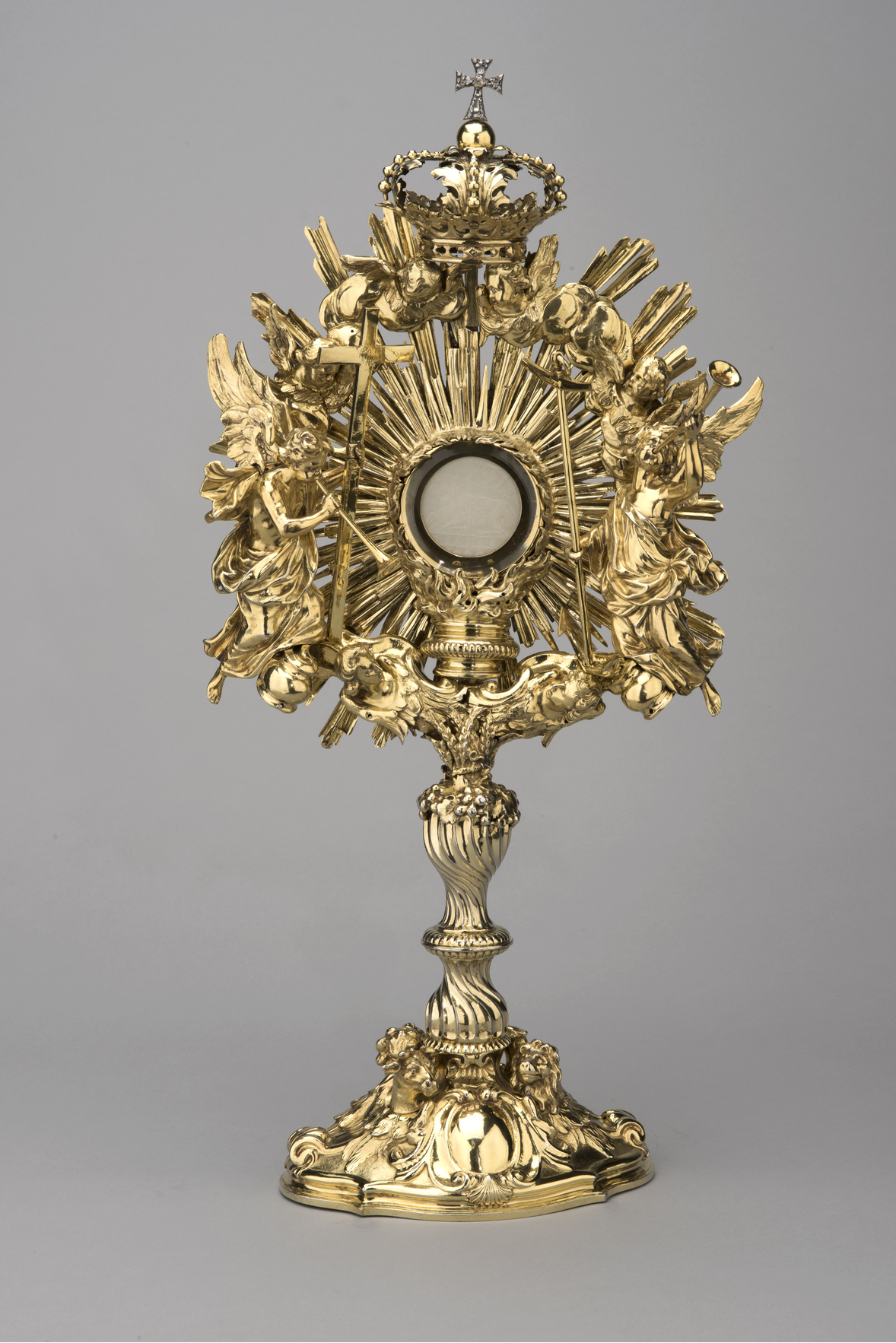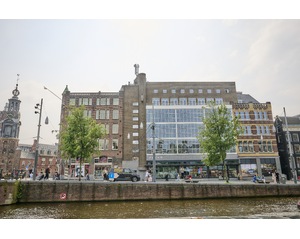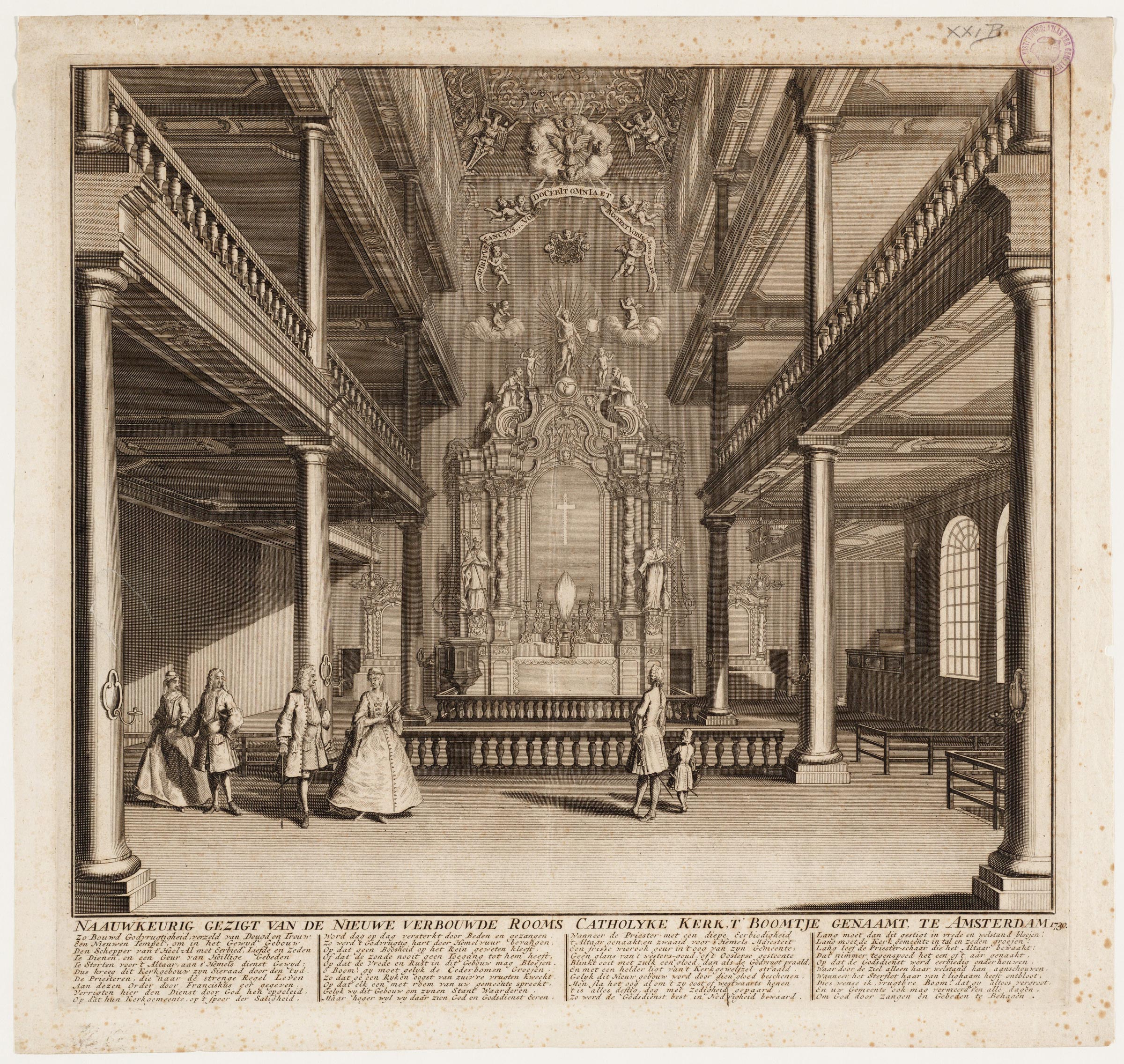The turbulent history of a singing choir and its monstrance
Location
De Boom
Rokin 160
Historic building demolished
Type
Hidden church
Religious community
Roman Catholic Church
Object
Monstrance with symbols of the Miracle of Amsterdam
Maker and date
A. Le Pies
1700-1735
Visit
Not available for viewing
Around 1640, about three hundred years after the events surrounding the Miracle of Amsterdam, the Sint Cecilia Collegie was founded. This Catholic singing society aims to keep the devotion to the Miracle of Amsterdam alive, even if after the Alteration this is only allowed in secret. The members of the choir sing weekly in mass celebrations that take place in an average house diagonally opposite the Nieuwezijds Kapel (the place of the miracle). The priests who celebrate these masses usually come from the Order of the Franciscans. As a result, the relationship between the Collegie and the clandestine church of the Franciscans Het Boompje is close. After they could no longer meet in the house of a colleague, they moved to this clandestine church further down the Kalverstraat in 1705. During the large-scale renovation of Het Boompje in 1728, the Sint Cecilia Collegie loaned this precious monstrance with symbolism referring to the Miracle of Amsterdam to the church.
The history of the Sint Caecilia Collegie's precious monstrance is particularly turbulent in the twentieth century. In 1911, 'their' church Het Boompje was demolished to make way for the new V&D department store. The collegie moves to the Moses and Aaron Church on Waterlooplein. When the presbytery of this church had to disappear for the construction of a new motorway, the collegiate council ended the loan of the monstrance.
The Sint Caecilia Collegie made a new start in 1997 with the new main task of supporting the annual Silent Procession. And the monstrance? Since 2005, it has been telling the story of a centuries-old Amsterdam devotion and the choir dedicated to it in Museum Ons' Lieve Heer op Solder.
Pieter-Jan van Giersbergen
Curator Our Lord in the Attic Museum
Last edited
March 09, 2025
Monstrans van het St. Cecilia Collegie, A. Le Pies, 1700-1735. Collection Museum Ons' Lieve Heer op Solder.
Exterior: photography Robert Westera.
Nauwkeurig gezigt van de nieuwe verbouwde Rooms Catholyke Kerk 'T Boomtje Genaamt te Amsterdam, maker unknown,ca. 1730. Collection Museum Ons Lieve Heer op Solder.
De westzijde van het Rokin. Gezien in noordelijke richting vanaf de Doelenbrug met rooms-katholieke kerk Het Boompje, maker unknown, ca. 1900. Collection Stadsarchief Amsterdam.
Kropholler, A.J en L.M. Weterings, ’t Boompje: Kerk van St. Franciscus v. Assisie in Beeld (Hilversum 1911).
Margry, P.J. en J. Joor, Muziek En Mirakel in Amsterdam (Aerdenhout 2006).
Margry, P.J. en C. Caspers, Het Mirakel van Amsterdam: Biografie van een Betwiste Devotie (Amsterdam 2017).
Nys, W., Gedreven Door Talent. 350 Jaar Edelsmeedkunst En Academie (Deurne / Antwerpen 2013).
'Summaries', Bulletin Van Het Rijksmuseum 52, no. 3/4 (2004): 366-87.








